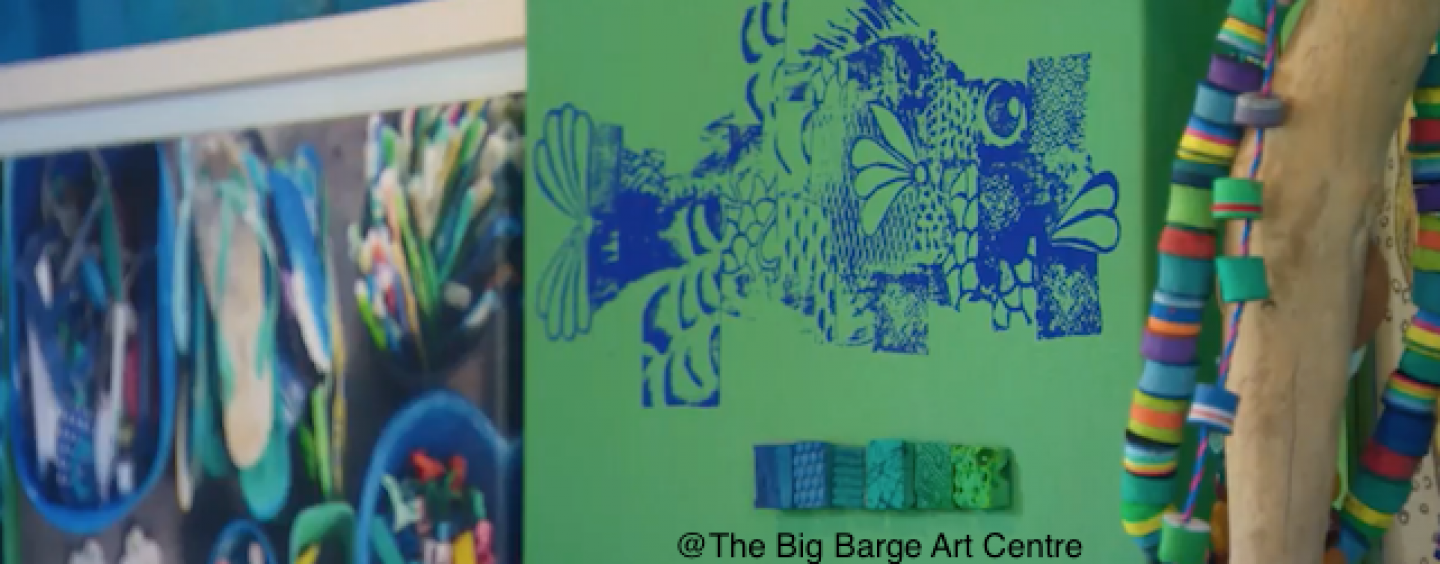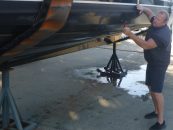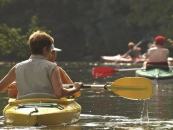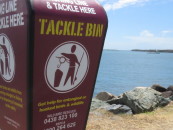The Gold Coast is renowned for our world-class beaches, pristine waters, and surfing hot spots. Tourists from Australia and all over the globe flock here to enjoy what mother nature has to offer them on our shores. Our clean beaches, recycling schemes and conscientious Gold Coast vendors help our beaches stay clean on the surface, but it is undeniable that plastic pollution is an ever-growing worldwide catastrophe. There are, however, a few individuals who are taking it upon themselves to turn this disaster into something dazzling.
All around Australia, individuals and artists are adopting a new outlook on plastic pollution. Marine debris are being rescued and repurposed as art pieces. From an eyesore to an eye-opener, plastic pieces, discarded rope and fishing utensils, are being used to build sculptures, homewares, fashion and art installations, and the public can’t seem to get enough.
ROPE BUOY – CURRUMBIN
Neddy Van Dyck is no stranger to the ocean and the pollution that threatens it. A marine scientist and fisherman, Neddy sources retired materials from along the coast of Western Australia. Using mostly crayfish rope, the Currumbin-based artist crafts and sells hand-woven homeware. Crayfish rope is inherently sturdy, and the water and mould resistant properties are of benefit when being sold as household items. Not only does Neddy and his team forage for and collect washed up rope, but he also purchases retired rope from fisherman.
Rope Buoy use 100% recycled materials and go beyond the art to provide eco-friendly packaging and carbon-neutral delivery. Beautiful homewares need not come at a cost to the environment. ropebuoy.bigcartel.com
WASTELAND – SYDNEY
Sydney-siders may have visited the Customs House in October 2018 to see an art installation comprising of 2,255 orange spheres. However, this art piece is not made up of just average orange spheres. 120 kg of ocean debris was suspended from the ceiling in a stunning and powerful exhibition, named Wasteland, presented as part of the annual Art & About Sydney program. Creative Studios Mundane Matters, and their creative director Danling Xiao worked with Whitsundays company, Eco Barge Clean Seas Inc., which recovered the materials for the display. Plastic bottles, lids, broken chairs, and microplastics were among the recycled materials, which were ground down and melted to make mould for the artwork. Highlighting the issue of food and plastic waste, Wasteland challenges audience to think outside of the box and challenge their own behaviour. artandabout.com.au/projects/wasteland
EMMA WASHER THE BIG BARGE ART CENTRE COCOS KEELING ISLAND
A recent survey of Cocos Keeling Island (off the coast of Western Australia) conducted by a Sea Shepherd Marine Debris team and research scientist Dr Jenifer Lavers, showed an accumulation of plastic debris to have a conservative estimate of 414 million pieces on the island. Emma Washer, a local resident and owner of the Big Barge Art Centre, turns dismay into determination. Using plastic pollution that washed up on the shores, Emma creates from a place of passion for the environment. From sculptures to costumes, wearable art and jewellery, Emma has been using the same washed-up materials for over twenty years. Housed within a repurposed barge, The Big Barge Art gallery showcases art from local artists, and has become a centre for Emma’s art courses using local washed up flotsam. Emma, who restored the barge with her dad Terry and the local community, understands that her ocean debris art can help change a community’s perception of marine debris. “People choose to live here because of the stunning and pristine environment, so you can’t help but be moved and give thought to the amount of stuff washing up here,” she told Boat Gold Coast. “I think the community really embraces artworks made from ocean plastics and debris… and once they have a go of making beautiful art from unwanted trash, they don’t want to use new materials.” cocoskeelingislands.com.au/big-barge-art-centre Big Barge Instagram @bigbargeartcentre
It is the responsibility of all Australians, especially those of us by the beach, to ensure we manage our plastic consumption and waste carefully. But for those with a creative eye, repurposing debris into art is a way you can help keep our beaches clean, create something unique, and raise awareness all at once.
By Kimberley Bernard
*Cover image: The Big Barge Art Centre






























